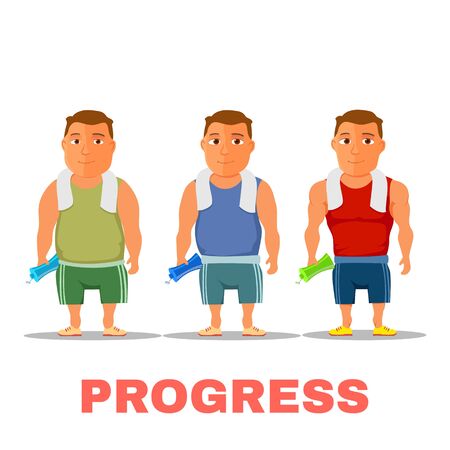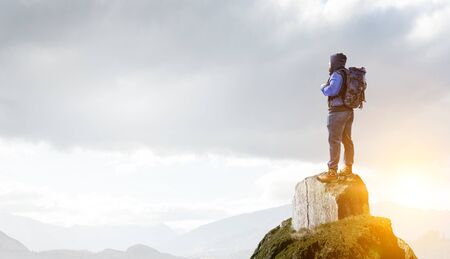Why the Right Hiking Boots Matter on American Trails
If you’re planning to hit America’s famous trails—whether it’s trekking through the rocky peaks of Colorado or navigating muddy paths in the Appalachian Mountains—your choice of hiking boots can make or break your adventure. Here’s why picking the right pair matters so much in the U.S., where trail conditions are as varied as the landscape itself.
From Rocky Mountains to Appalachians: Every Trail is Different
American trails cover everything from dry desert routes and dense forests to wet, slippery hillsides. Wearing proper hiking boots helps you handle:
| Trail Type | Common Conditions | Boot Features Needed |
|---|---|---|
| Rocky Rockies | Sharp rocks, loose gravel, steep climbs | Ankle support, tough outsoles, strong toe caps |
| Muddy Appalachians | Wet soil, roots, stream crossings | Waterproofing, grippy soles, quick-dry linings |
| Desert Southwest | Hot sand, dust, cacti | Breathable uppers, lightweight build, debris protection |
| Pine Forests (Pacific Northwest) | Damp moss, fallen branches, rain | Mud-shedding tread, waterproof materials, sturdy construction |
Comfort and Safety: Not Just for Hardcore Hikers
You don’t have to be a pro mountaineer to benefit from good boots. Even casual hikers will notice the difference when their feet are protected from blisters, sprains, and slips. The right footwear cushions your steps and keeps you going mile after mile.
Avoiding Common Foot Problems on U.S. Trails
- Blisters from friction or moisture buildup
- Ankle twists from uneven terrain
- Tired feet due to lack of arch support or poor shock absorption
- Sore toes from stubbing against rocks or roots
Your Dollar’s Worth: Budget vs Premium Boots in Real-Life Scenarios
The big question is whether budget boots can hold up to American trails or if premium options truly pay off. We’ll dive into the pros and cons of each in upcoming sections—but remember: where you hike and how often you hit the trails will heavily influence what’s worth your dollar.
2. Budget Hiking Boots: Pros, Cons, and Top Picks
Why Consider Budget Hiking Boots?
If you’re new to hiking or just enjoy the occasional weekend adventure on local trails, budget hiking boots can be a smart choice. Not everyone needs high-end gear for shorter hikes or easy trails. Let’s break down what makes affordable hiking boots a solid pick for many Americans.
Pros of Budget Hiking Boots
- Wallet-Friendly: Perfect for those not looking to break the bank on outdoor gear.
- Lighter Weight: Many entry-level boots are less bulky, which makes them comfortable for day hikes.
- No-Nonsense Design: Simple styles and features make them easy to use and maintain.
- Wide Availability: You can find good options at major retailers like REI, Dick’s Sporting Goods, or even Walmart.
Cons of Budget Hiking Boots
- Durability: They may wear out faster, especially with heavy use on rocky or rugged terrain.
- Limited Support: Entry-level boots might lack advanced ankle support or cushioning.
- Waterproofing: Cheaper models often have basic or no waterproofing, so your feet could get wet in rainy conditions.
Budget vs. Premium: Quick Comparison
| Feature | Budget Boots | Premium Boots |
|---|---|---|
| Price Range | $40–$120 | $180–$350+ |
| Best For | Causal hikes, beginners, light trails | Backpacking, rugged terrain, long treks |
| Lifespan | 1–2 seasons (with moderate use) | Several years (with proper care) |
| Main Materials | Synthetic mesh, basic leather blends | Full-grain leather, advanced synthetics, Gore-Tex® lining |
| Comfort Level | Adequate for short hikes | Superior for all-day wear and rough ground |
| Ankle Support & Grip | Sufficient for flat trails | Excellent for uneven and steep paths |
| Waterproofing | Basic or none | Advanced tech—keeps feet dry in harsh weather |
Top Affordable Hiking Boot Brands in the U.S.
Merrell Moab 2 Ventilator Mid
- The Scoop: A favorite among American hikers for comfort and breathability—great for dry climates like Arizona or California.
Columbia Newton Ridge Plus Waterproof Amped
- The Scoop: Lightweight and waterproof enough for muddy East Coast trails; fits well right out of the box.
Skechers Relment Pelmo
- The Scoop: Surprisingly tough for the price; perfect if you’re just starting out and want solid grip on light hikes.
Quechua MH100 Mid Waterproof
- The Scoop: Great bang-for-your-buck from Decathlon; ideal for family trips to state parks or casual weekend walks.
TIPS FOR BUYING BUDGET HIKING BOOTS IN THE U.S.
- Try Before You Buy: Always try boots on with your favorite hiking socks—fit matters most!
- User Reviews Count: Check online reviews from other American hikers about fit and performance on local trails.
- Avoid Deep Bargain Bins: Super cheap? Double-check quality—sometimes it’s worth spending just a bit more for comfort and safety.
If you love hitting U.S. trails on weekends or want an affordable way to start hiking, these budget-friendly boots can get you moving without draining your wallet. Choose wisely by considering where you’ll hike most and what features matter most to you.

3. Premium Hiking Boots: What Sets Them Apart?
Dive into Advanced Features
When it comes to premium hiking boots, you’re not just paying for a name—you’re investing in advanced features that can make or break your adventure. High-end boots are designed with cutting-edge materials and technology to keep your feet comfortable and protected, even on the toughest trails in the U.S. backcountry.
Key Premium Features at a Glance
| Feature | How It Helps | Typical Example |
|---|---|---|
| GORE-TEX® or similar waterproof membranes | Keeps feet dry while allowing sweat to escape | La Sportiva Nucleo High II GTX |
| Vibram® outsoles | Provides superior grip on rocky and slippery surfaces | Salomon Quest 4D 3 GTX |
| Full-grain leather uppers | Maximum durability and abrasion resistance | Danner Mountain Light |
| Ankle support and reinforced shanks | Reduces risk of injury on uneven terrain | Lowa Renegade GTX Mid |
| Customizable fit options (lacing systems, insoles) | Boosts comfort for long days on the trail | Zamberlan Vioz GTX |
Long-Term Value: Why Pay More Upfront?
The sticker shock of premium hiking boots can be real, but seasoned American hikers know they’re worth every penny in the long run. Here’s why:
- Durability: Quality materials mean these boots last for thousands of miles—often outlasting two or three pairs of budget boots.
- All-Season Performance: Premium boots handle everything from summer dust to winter snow, so you don’t need a different pair for each season.
- Resoleable Construction: Many high-end brands let you replace worn-out soles, extending your boots’ lifespan even more.
- Better Protection: Advanced support helps prevent blisters, rolled ankles, and sore feet, especially during multi-day backpacking trips through rugged U.S. national parks.
Why Serious Hikers Invest in High-End Options for Demanding Routes
If you’re planning to tackle iconic American trails like the John Muir Trail, Pacific Crest Trail, or sections of the Appalachian Trail, premium hiking boots aren’t just nice-to-haves—they’re essential gear. The unpredictable weather, rocky terrain, and remote locations found throughout U.S. backcountry demand footwear that can handle it all.
The Bottom Line on Premium Hiking Boots’ Appeal for American Hikers:
- Confidence: Trust your gear on exposed ridges, river crossings, and steep descents.
- Pain Prevention: Better cushioning and support translate to fewer aches after long days.
- Pride of Ownership: There’s something satisfying about owning a piece of top-notch outdoor gear built to go the distance.
If you regularly hit challenging trails or plan serious backpacking trips across America’s wild places, splurging on premium hiking boots is an investment your feet will thank you for, mile after mile.
4. Key Features to Compare: Budget vs. Premium
Understanding What Matters Most in Hiking Boots
When choosing between budget and premium hiking boots, it’s not just about the price tag—it’s about the features that make a real difference on American trails. Whether you’re trekking through the rainy Pacific Northwest, scrambling up rocky Colorado peaks, or wandering the dusty paths of the Southwest, certain boot attributes are non-negotiable. Here’s what you should pay attention to:
Must-Have Boot Attributes
| Feature | Budget Boots | Premium Boots |
|---|---|---|
| Waterproofing | Usually basic coatings or entry-level membranes; may hold up in light rain but often struggle during all-day wet hikes. | Advanced technologies like Gore-Tex or eVent; designed for serious downpours and river crossings common in places like the Appalachian Trail. |
| Traction | Simpler rubber soles; grip can be decent on packed dirt but may slip on wet rocks or loose gravel. | Specialized lug patterns and sticky rubber compounds; built for superior grip on varied terrains from Yosemite granite to muddy Midwest trails. |
| Durability | Lighter materials that might wear out after a few seasons; stitching and glue may fail under heavy use. | Full-grain leather or tough synthetics; reinforced seams and soles meant to last for years of backcountry adventures. |
| Comfort | Cushioning is basic and break-in period can be rough; arch support may be limited, causing foot fatigue on longer hikes. | Anatomically shaped footbeds, plush cushioning, and supportive midsoles; designed for all-day comfort even on the Grand Canyon’s steep switchbacks. |
Real-Life Hiking Scenarios Across America
- Pacific Northwest: Frequent rain means waterproofing is crucial—premium boots with advanced membranes shine here.
- Rocky Mountains: Rocky terrain demands excellent traction and durability—key strengths of many high-end models.
- Southeast & Appalachia: Humid conditions and slippery roots require both comfort and non-slip soles, often found in mid-range to premium boots.
- Sierra Nevada & Desert Southwest: Long miles under harsh sun mean breathable yet durable boots are worth the investment.
What Should You Prioritize?
If you stick mostly to well-maintained local trails near city parks, a quality budget boot can do the job. But if you’re planning multi-day backpacking trips, crossing streams, or hitting rugged national parks, splurging on premium features could save your feet (and your trip).
5. How to Decide: Matching Boots to Your Adventure and Wallet
Know Your Hiking Style and Needs
Before you buy, think about where and how often you’ll hike. Are you a weekend warrior hitting up local trails or planning multi-day backpacking trips in the Rockies? Here’s a quick guide:
| Hiking Style | Budget Boots | Premium Boots |
|---|---|---|
| Day Hikes on Easy Trails | Great choice—affordable, comfortable, gets the job done | Not necessary unless you want extra features or durability |
| Weekend Backpacking (Moderate Terrain) | Can work if you choose sturdy models with good support | Recommended for more comfort, waterproofing, and long-term use |
| Serious Backcountry or Thru-Hiking | Might not hold up—may lack support and longevity | Worth the splurge for safety, durability, and comfort |
When to Save & When to Splurge
Save If:
- You’re new to hiking or only go occasionally.
- You stick to well-maintained U.S. trails with mild weather.
- Your hikes are short (under 5 miles) and your pack is light.
- You’re still growing (for teens or young adults).
Splurge If:
- You hike regularly or plan long-distance trips like sections of the Appalachian Trail.
- You need specialized features—waterproofing for wet climates, ankle support for rocky terrain, or extra cushioning for sensitive feet.
- Your boots need to last several seasons or see heavy mileage.
- You have foot issues requiring top-notch fit and support.
How to Find Deals and Shop Smart in the U.S.
- Check Outdoor Retailers: Look for sales at stores like REI, Dick’s Sporting Goods, and Bass Pro Shops. REI’s annual sales are legendary among hikers!
- Shop Off-Season: Buy winter boots in spring or summer ones in fall for deep discounts.
- Loyalty Programs: Sign up for store rewards—REI members get special coupons and dividends back each year.
- Online Bargains: Watch Amazon, Backcountry.com, and Moosejaw for flash deals and clearance events.
- Outlet Stores: Check out Merrell, Columbia, or Keen outlet stores—sometimes you’ll find last season’s premium boots for budget prices.
- Don’t Forget Fit: No deal is worth it if your boots don’t fit right! Always try on with hiking socks and walk around the store (or your living room if buying online with free returns).
Your Perfect Pair: It’s All About Balance
The best boot isn’t always the most expensive—it’s the one that matches your adventure plans and doesn’t break your bank. By knowing when to save and when to invest, plus how to shop smart, you’ll make every dollar count on America’s trails.

